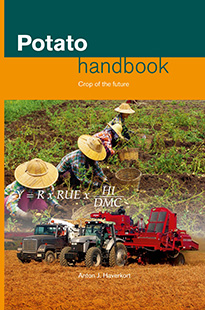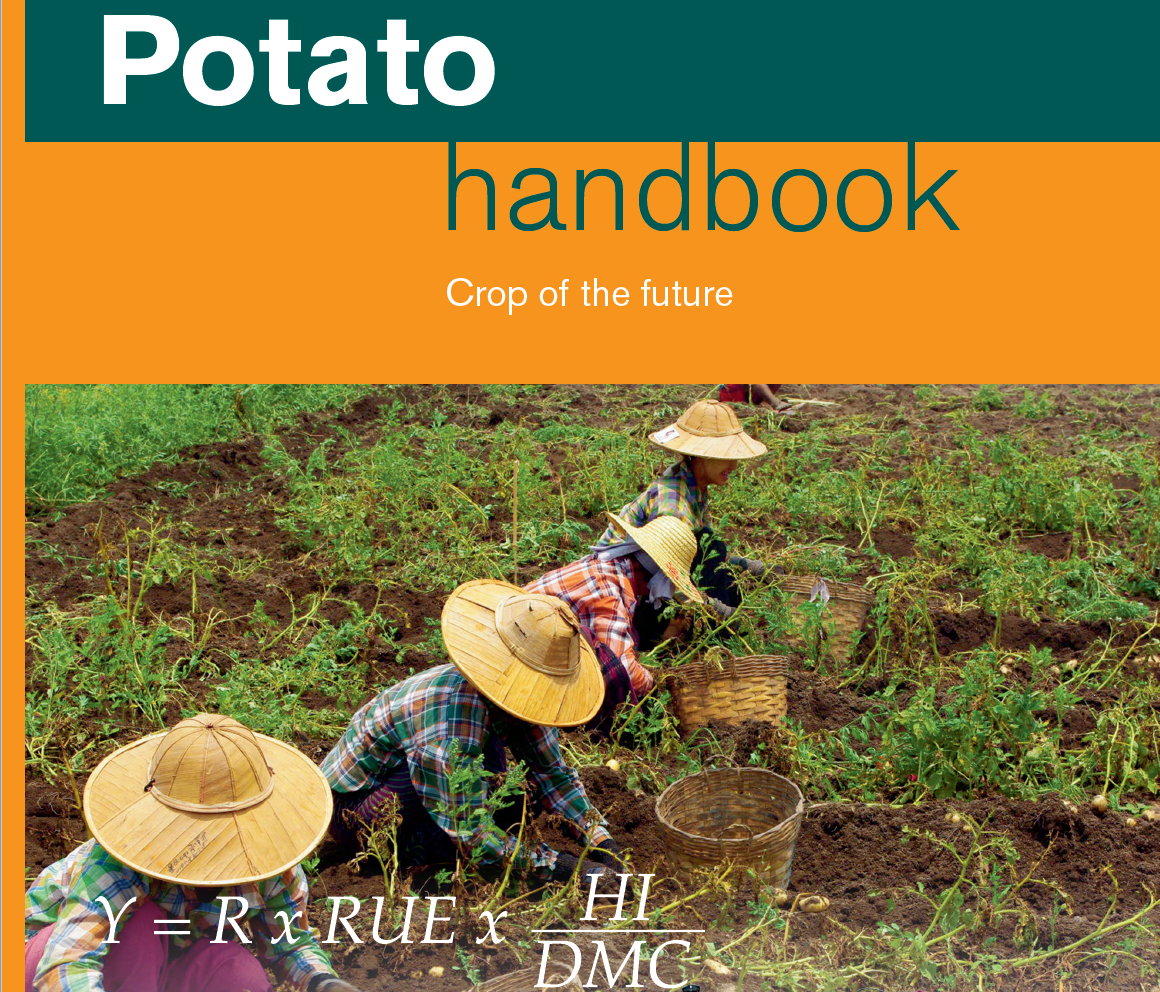Already a subscriber? Activate your premium account

Potato Handbook

The potential yield is the yield that the crop obtains theoretically when all production defining abiotic growth factors such as CO2, solar radiation and temperature are used at their maximum capacity and show no prohibitive level during growth.
The plant characteristics such as crop lateness or earliness fit the length of the season and the crop architecture is such that maximum radiation is intercepted throughout the season without any wilting or lodging occurring. Water and nutrients are assumed to be available at ample non-limiting supply. Such yields are theoretical, they are calculated with a crop growth model with only optimal parameter values completed in its formulae.
Production formula
Taking into consideration that tuber fresh matter yield (Y in g/m2) depends on the amount of solar radiation that is intercepted by the canopy (R in MJ/m2) with a radiation use efficiency (RUE) of 1.25 g dry matter per mega joule global radiation; also taking into consideration that the harvest index (HI) at crop end is 0.75 g tuber/g total biomass; and further considering that the dry matter concentration (DMC) as the proportion g dry matter/g fresh is inversely correlated to fresh yield, as lower dry matter leads to higher fresh yields, the following equation holds:

For example, if the crop has intercepted 1500 MJ/m2 over the whole season and the tubers contain 20% dry matter, the fresh tuber yield Y equals 7031 g/m2 equivalent to 70.31 t/ha.

This equation makes it possible to calculate potential fresh tuber yields. This provided that meteorological data (average daily temperature in °C and solar radiation in MJ/m2) are available. Besides, further inputs in the model are needed, these are planting depth and the dates of planting and crop end.
Events
©2015 - 2024 Potatoworld | Webdesign and realisation COMMPRO